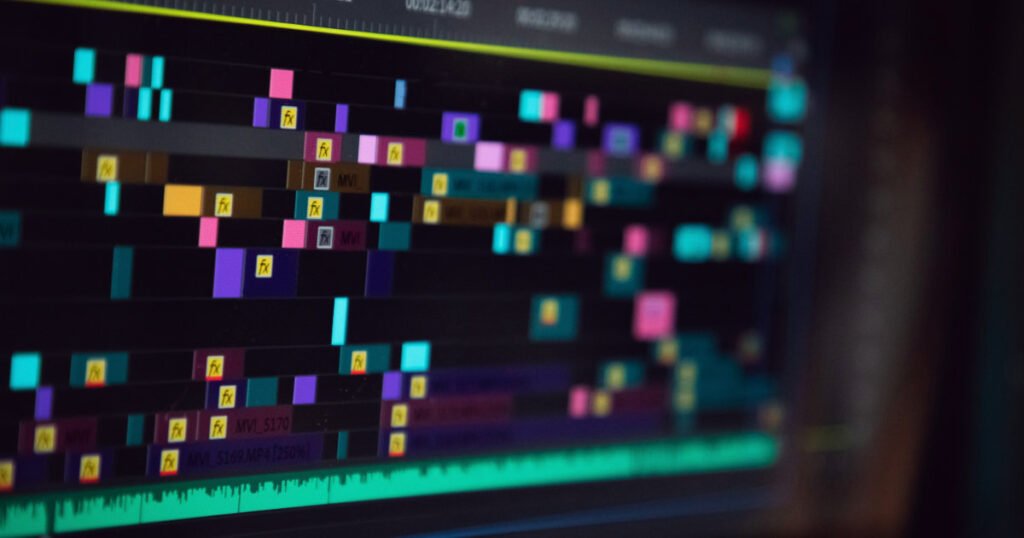Mastering Advanced Film Editing


Let’s skip the basics and talk about elevating your film with some advanced editing strategies. It’s not just about cutting and splicing; it’s an art form that involves narrative techniques and pacing to really bring a story to life. Whether you’re fine-tuning a passion project or working on a professional gig, understanding these advanced tactics can seriously up your game. Let’s get into it!
The Art of Narrative Techniques in Editing
You’ve probably heard that editing is where the real magic happens, right? Well, it’s true! Advanced editing isn’t just about cutting; it’s about crafting a story. Think of yourself as a storyteller, where each cut can add a layer of depth. We’re talking flashbacks, montages, cross-cutting – techniques that can turn a simple sequence into a compelling narrative. Remember, the goal is to keep your audience glued to the screen, and narrative techniques are your secret weapon.
Pacing: The Heartbeat of Your Film
Pacing is the unsung hero of film editing. It’s all about the rhythm and flow of your film. Too fast, and your audience can’t keep up. Too slow, and they’re snoozing. It’s like being a DJ for visuals – you’ve got to feel the beat of your story. This is where you play with timing, duration of shots, and even the tempo of dialogues. Get it right, and your film will pulse with life!
Advanced Editing Tools and Tips
Alright, let’s talk tools of the trade. We’re beyond basic software here. Dive into tools that offer advanced features – think color grading, complex layering, and sound design capabilities. Also, shortcuts are your best friends; they save time and let you focus more on creativity. Keep an eye out for online tutorials or forums where pros share their secret sauces. Remember, the right tool, combined with your skills, can make a huge difference.
Experimenting with Color and Light
Color grading isn’t just about making your film look pretty; it’s a whole language in itself. Think about how different colors can convey emotions – cool blues for a somber mood, warm oranges for nostalgic scenes. And it’s not just about slapping a filter on; it’s about understanding the color theory and how different shades interact. Play around with contrasts and brightness to bring attention to key elements in your scene. It’s like painting with light, where each stroke adds a new dimension to your story.
Sound Design: More Than Just Background Noise
Sound design is an art form that can elevate your film from good to great. It’s more than just choosing the right soundtrack. It’s about using ambient sounds, Foley effects, and even silence to add layers to your narrative. The rustle of leaves, the clinking of glasses, the distant city hum – each sound can add realism and depth. And let’s not forget about dialogue. How you edit conversations, the pauses you leave, and the emphasis on certain words can drastically change the viewer’s perception. It’s like orchestrating an invisible symphony that complements your visual storytelling.
Bringing It All Together: Real-World Editing Examples
Let’s get real – theory is great, but examples speak louder. Check out films known for their editing brilliance. Notice how they use narrative techniques and pacing, how scenes transition, and the overall rhythm. Then, apply these observations to your work. Don’t be afraid to experiment. Sometimes, breaking the rules creatively can lead to the most memorable films.
So, there you have it, fellow film enthusiasts! Mastering advanced film editing is a journey of continuous learning and creativity. Remember, it’s not just about the tools and techniques; it’s about how you use them to tell a story. Whether you’re playing with narrative techniques, finding the perfect pacing, experimenting with colors and light, or weaving an auditory tapestry with sound design, each element is a piece of the puzzle that makes your film unique. Don’t be afraid to experiment and push the boundaries. After all, that’s what art is about, right? Keep editing, keep creating, and most importantly, keep telling stories that matter. Catch you in the next edit bay!
Step into the world of film editing and discover the profound impact it has on storytelling. Dive into a realm where each cut, transition, and sound not only shapes the visual narrative but also deeply influences the viewer’s experience and interpretation of the story. It’s a fascinating exploration that will undoubtedly enrich your understanding and appreciation of the art of film editing.

Responses